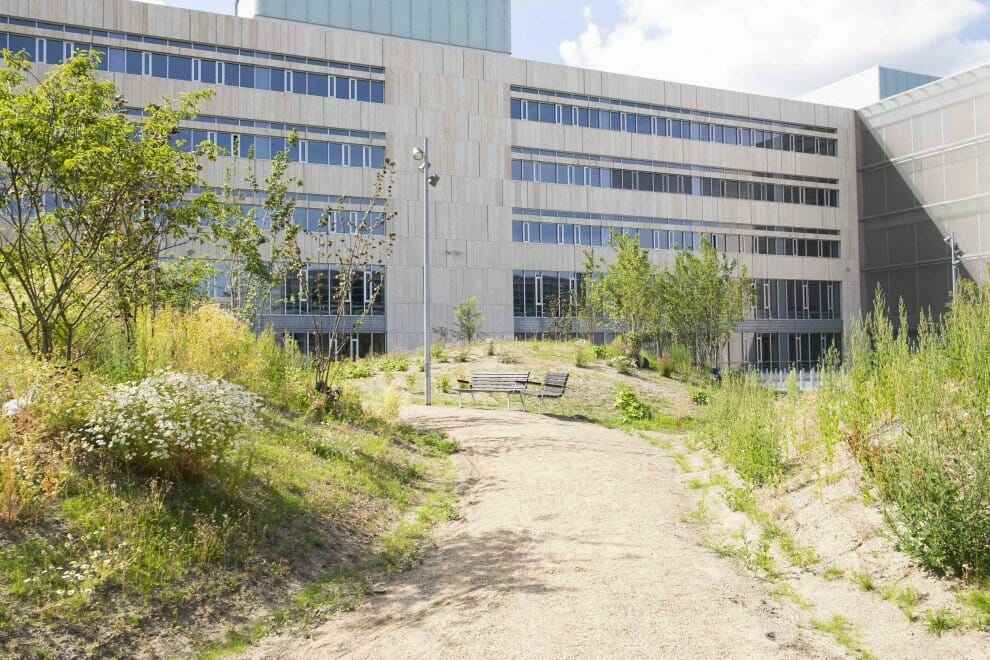Universitetsavisen
Nørregade 10
1165 København K
Tlf: 35 32 28 98 (mon-thurs)
E-mail: uni-avis@adm.ku.dk
—
Campus
Escapism — There are loads of green areas on the University of Copenhagen campus. We did the leg work and review six of the parks here.
This article was first published 14 September 2016. It has been updated 2019 and 2021.
You can’t bear the thought of returning to the library-brown corridors of the university after a long summer break now that the weather gods have finally promised good weather?
No need to despair. The University of Copenhagen has loads of parks and green areas that are excellent for introductory beers and late summer homework.
TIP: Watch out for Amorphophallus titanum, which continues to be the subject of particular attention. The plant is better known as the corpse flower, or in Danish the penis flower, due to its phallic-like design. It blooms only for a few days every several years, then smelling, according to reports, of rotten meat. Now you have a story to impress your fellow students on your park tour.
In the old agricultural college in the quiet Frederiksberg district is a quiet set of university gardens. Forget the failed pickup lines in the Friday bar and invite your crush on a tour of the Landbohøjskolen Garden. The park is laid out in the style of classic romanticism, and with more than 6,000 plant varieties, there are enough conversation topics for even the most inexperienced daters.
In the garden you will find the cozy Væksthuset café where the barista brewed coffee is so good that the place has won the University Post prize for the University of Copenhagen’s best coffee shop.
As a bonus, the Væksthuset is run by volunteers from the Faculty of Science, and your study card gives you discounts on coffee and food. If the date really ends well you can finish off with a bottle of rosé for DKK 179.
TIP: In the middle of the garden there is a small footbridge over a park lake. Pure H. C. Andersen, and the perfect place to gather up your courage for that first kiss.
Universitetsparken on North Campus is the epicenter of the annual Spring Festival. Pre-pandemic, more than 12.000 sociable students and employees participated in the festivities.
But the university park, Universitetsparken, is always worth a visit.
The park is relatively informal with its flat lawns well suited to games like softball and beer bowling. In the bright sun, a trip to the university park can be a good way to relax and spend the day with new or old classmates. Incidentally: Volunteers planted more than 10,000 wild plants in the university park in 2016. So the place is also for you with green fingers.
The Center for Health and Society (CSS) campus in the city is steeped in history and leather-bound books. So much that we sometimes forget that the brown-yellow buildings and associated gardens right up to 1995 were used as a municipal hospital and not as a university campus.
Tucked away in a corner of CSS you will find Solhaven – easiest to access via the entrance at Gammeltoftsgade – unless you want to test your sense of direction in the labyrinthine CSS hallways.
On most days, it is dead quiet, but during intro weeks and on the CSS campus day it is full speed ahead. Enjoy a cup of coffee from the Café Kommunen at CSS, or walk in to the all-day opening hours political science bar Jacques D and take out a couple of beers out into the lovely garden.
We admit that the Pometet with its Taastrup location is not a simple getaway after class. But the Pometet with its collection of fruit trees and bushes is a fun, and different tour, to take your fellow students on. The park, which is part of the Department of Plant and Environmental Sciences, exhibits more than 750 varieties of apples and a large number of berry and nuts varieties.
The new landmark of the University of Copenhagen has been covered in prizes since its official opening in January 2019. Prizes for the roof, front, and interior. But the building is more than just the neat shaped bronze tower. It is also a green area, created for the students to get fresh air to the brain, especially in the warm late summer.
Panum’s old parking lots between Nørre Allé and Blegdamsvej has been shut down and replaced by poppies and cornflowers, tall grass and exotic species of plants.
»KUA is a place where the spirit cannot thrive«. This was the harsh verdict on the old KUA buildings from Professor of Comparative Literature, Erik A. Nielsen, back in 1995. But that was then. Twenty years later KUA, which is now called South Campus, no longer exhibit the gray shades of drab asphalt.
Strictly speaking, there is no park at South Campus – yet. But a winner among students is Karen Blixens Plads.
Who said that the island of Amager could not be charming?



